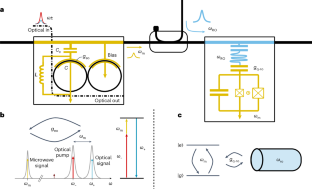2025-04-02 パシフィック・ノースウェスト国立研究所(PNNL)
<関連情報>
- https://www.pnnl.gov/news-media/moving-autonomous-experimentation-growing-thin-films-machine-learning
- https://pubs.aip.org/avs/jva/article/43/3/032702/3341018/Machine-learning-enabled-on-the-fly-analysis-of
分子線エピタキシー法による薄膜堆積中のRHEEDパターンの機械学習によるオンザフライ解析 Machine-learning-enabled on-the-fly analysis of RHEED patterns during thin film deposition by molecular beam epitaxy
Tiffany C. Kaspar;Sarah Akers;Henry W. Sprueill;Arman H. Ter-Petrosyan;Jenna A. Bilbrey;Derek Hopkins;Ajay Harilal;Jijo Christudasjustus;Patrick Gemperline;Ryan B. Comes
Journal of Vacuum Science and Technology A Published:March 27 2025
DOI:https://doi.org/10.1116/6.0004493

Author Notes
Thin film deposition is a fundamental technology for the discovery, optimization, and manufacturing of functional materials. Deposition by molecular beam epitaxy (MBE) typically employs reflection high-energy electron diffraction (RHEED) as a real-time in situ probe of the growing film. However, the state-of-the-art for RHEED analysis during deposition requires human observation. Here, we present an approach using machine learning (ML) methods to monitor, analyze, and interpret RHEED images on-the-fly during thin film deposition. In the analysis workflow, RHEED pattern images are collected at one frame per second and featurized using a pretrained deep convolutional neural network. The feature vectors are then statistically analyzed to identify changepoints; these changepoints can be related to changes in the deposition mode from initial film nucleation to a transition regime, smooth film deposition, and in some cases, an additional transition to a rough, islanded deposition regime. The feature vectors are additionally analyzed via graph analysis and community classification. The graph is quantified as a stabilization plot, and we show that inflection points in the stabilization plot correspond to changes in the growth regime. The full RHEED analysis workflow is termed RHAAPsody and includes data transfer and output to a visual dashboard. We demonstrate the functionality of RHAAPsody by analyzing the precaptured RHEED images from epitaxial depositions of anatase TiO2 on SrTiO3(001) and show that the analysis workflow can be executed in less than 1 s. Our approach shows promise as one component of ML-enabled real-time feedback control of the MBE deposition process.



